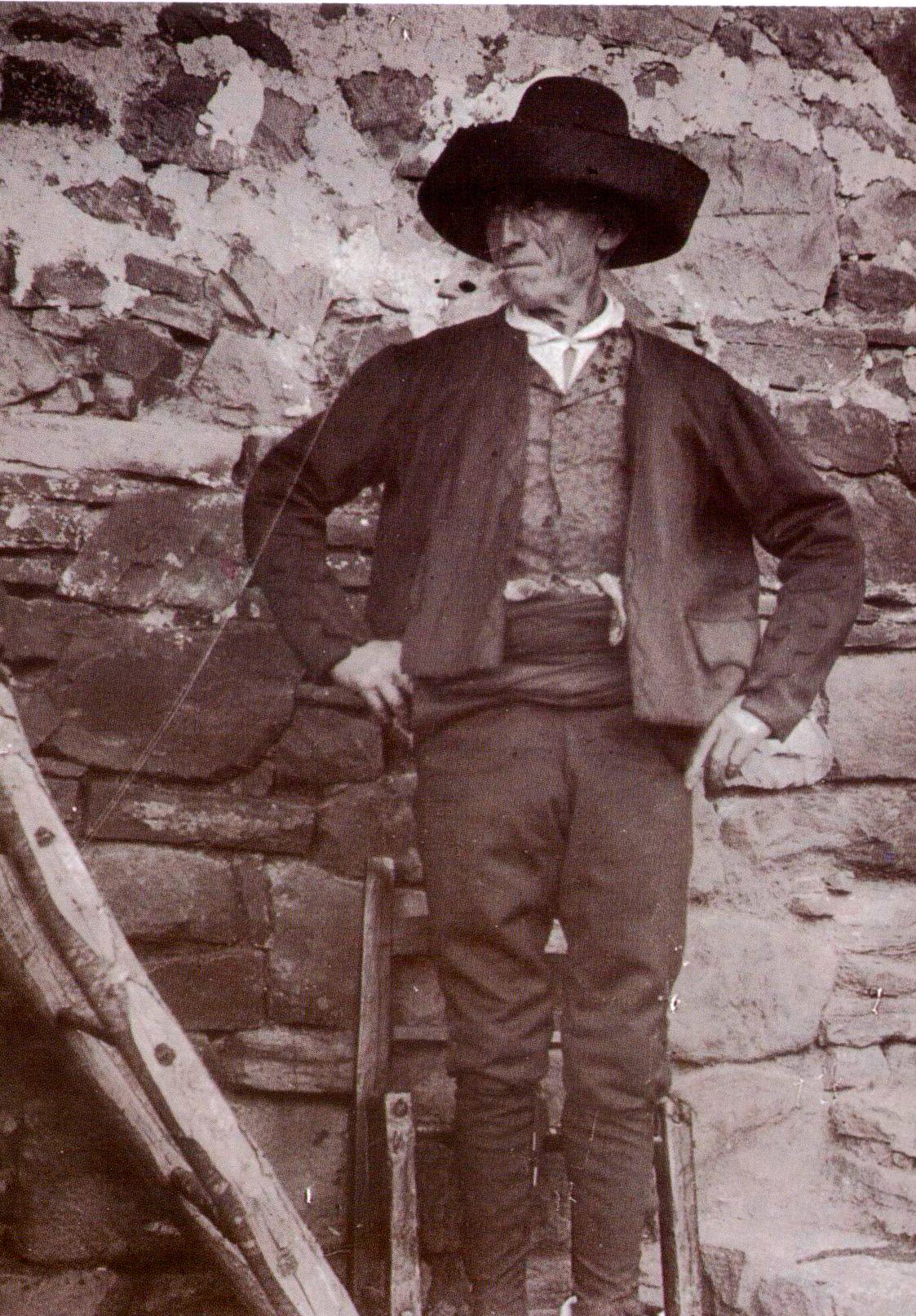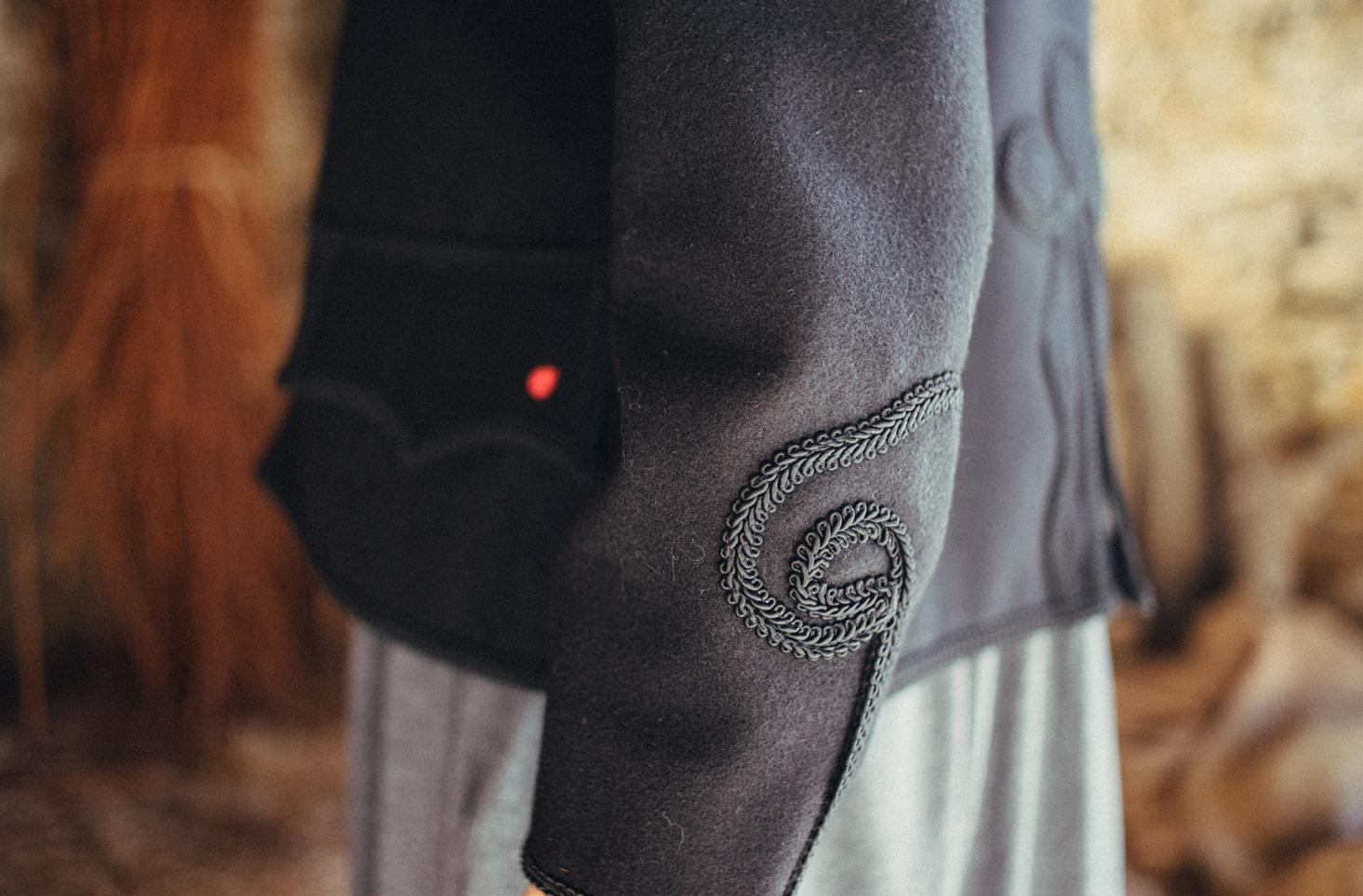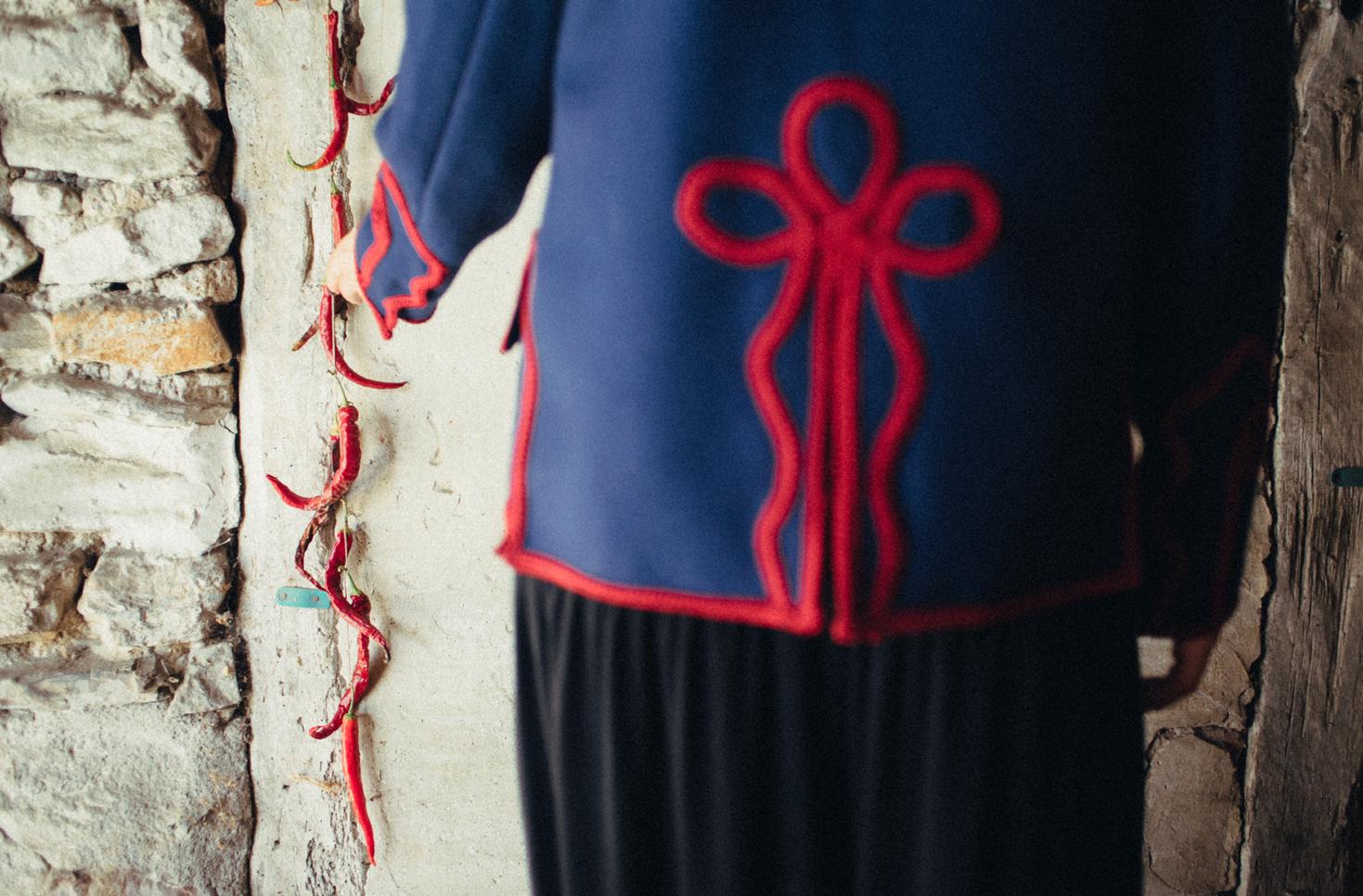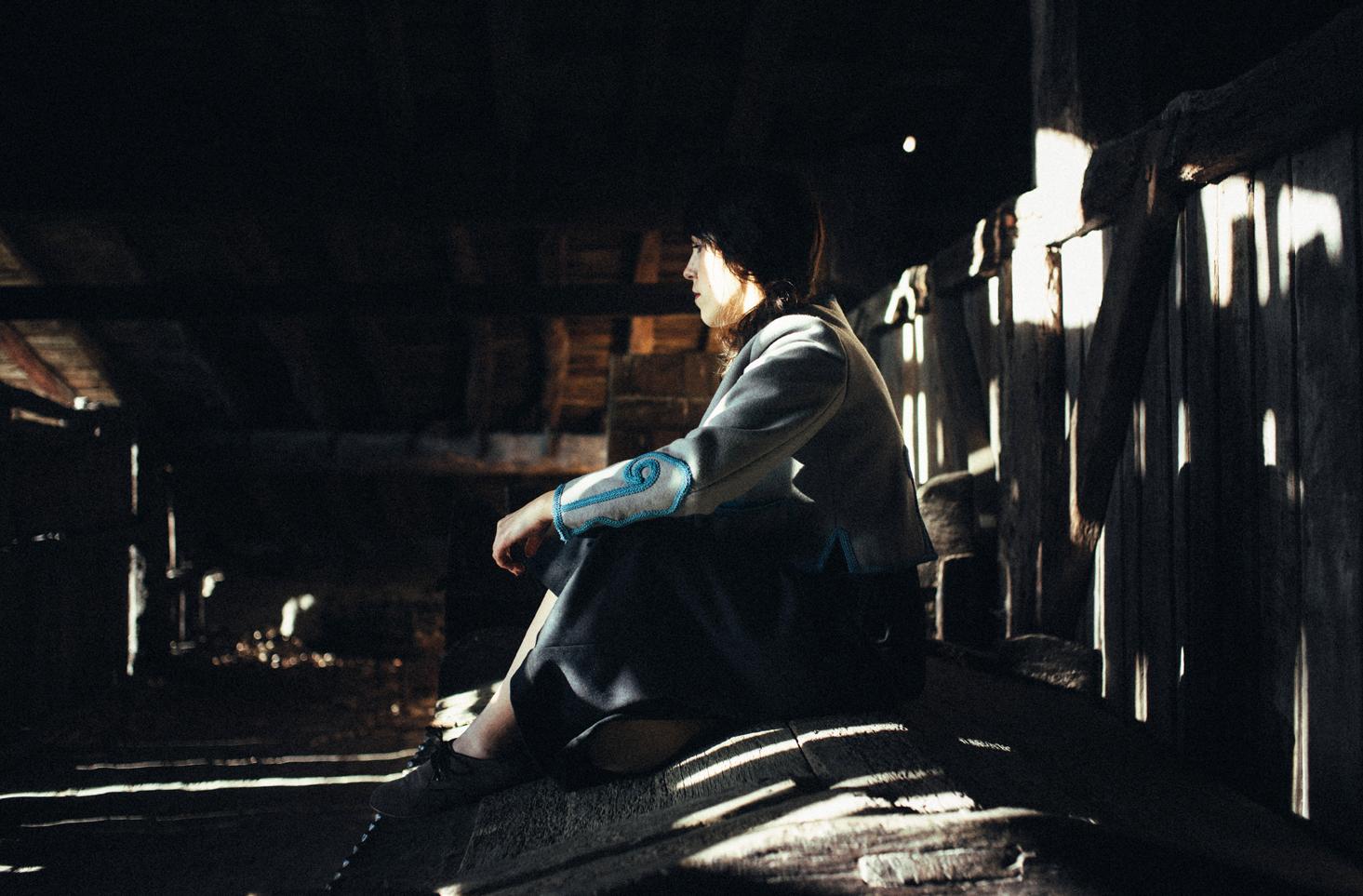arratiarra
Bilduma. Colección. Collection.

2018/19ko udazkeneko argitalapena | edición otoño-invierno 2018/19 | 2018/19 fall-winter edition

Egitasmo hau, honako hauen laguntzaz garatu da: Proyecto realizado con la ayuda de: This proyect has became true with the help and support of:


Kolaboratzaileak // Colaboradores // Colabs.:



Hitzaurrea
Altxorrak aurkitzen.
Gure eginkizuna jarraituz, euskal jantzi ezezagunak topatzearena, Bilboko Euskal Museoan amaitu genuen. Armairu eta liburu artean bilatuz, ale batekin lehen kolpeko amodio bat izan genuen. Jaka bat, zaharkituta eta kolorea joanda, baina guztiz maitemindu gintuen.
ARRATIARRA deitzen zen eta hau da bere istorio.
Prólogo
Descubriendo tesoros.
Embarcadas en nuestra misión de buscar prendas vascas desaparecidas, acudimos al archivo del Museo Vasco de Bilbao. Mirando entre libros, vitrinas y armarios descubrimos una pieza con la que tuvimos un flechazo. Una chaqueta, que a pesar de estar ajada y descolorida nos enamoró.
Se llamaba ARRATIARRA y esta es su historia.
Prologue
Finding treasures.
Following our mission, finding forgotten Basque clothes, we end up in the Basque Museum of Bilbao. Searching in between books, archives and closets, we found one piece with which we felt in love at first sight. It was a blazer, worn out and faded, but it totally took our attention.
It was called ARRATIARRA and this is its story.
- 6 -
Arratiako gizon bat, bere txamarrotearekin. Eulalia Abaitua. Lehenagokoen begiratuak. BEM. Hombre de Arratia, con su arratiarra. Eulalia Abaitua, Miradas del Pasado. MVB. A man from Arratia, wearins his arratiarra by Eulalia Abaitua, Miradas del Pasado. BBM.

- 7 -


- 8 -
Gaua beltza
Gaua beltza

01 Kapitulua
Arratiako txamarrotea edo arratiarra.
XIX. mendean, Arratiako haranean bizi ziren gizonek (hemendik dator izena) txamarrote hau enkargatzen zuten bere ezkontza egunean janzteko.
Handik Aurrera, arratiarrak ekitaldi eta egun berezietan jantziko zuten bakarrik. Askotan, bere bizitza osoan izango zuten jostun profesional batek eta artilez egindako jantzi bakarra zen hau.
Capítulo 01
Txamarrote arratiano o arratiarra.
En el siglo XIX, los hombres que vivían en el valle de Arratia en Bizkaia (de ahí el nombre) encargaban este chamarrote -prenda exterior de abrigo- para vestirlo el día de su boda.
A partir de ese momento, la arratiarra pasaba a ser esa prenda elegante reservada para ocasiones y eventos especiales. Sería de las pocas prendas que tendrían hechas por un sastre profesional, y en lana, a lo largo de su vida
Chapter 01
Arratia’s txamarrote or arratiarra.
On the 19th Century, the men who lived in the Arratia Valley in Bizkaia (this is where the name came from) had this jacket made to wear it on their wedding day.
From that day on, the arratiarra was their most elegant jacket and they may only wear it in very special events and occasions. Often, it was the only tailor-made jacket made in wool they were going to own in their entire life.
- 10 -


- 11 -
Arratiako gizon bat, bere txamarrotearekin. Eulalia Abaitua. Lehenagokoen begiratuak. BEM. Hombre de Arratia, con su arratiarra. Eulalia Abaitua, Miradas del Pasado. MVB. A man from Arratia, wearins his arratiarra by Eulalia Abaitua, Miradas del Pasado. BBM.
marinela gorria


- 12 -
marinel gorria marinel gorria



- 14 -
LAino urdina
LAino urdina
02 Kapitulua
Orain arte.
Arratiarrak bizi osoa irauteko egina zegoen, batzuetan belaunaldiz-belaunaldi pasatzen zelarik ere. Hala ere, gerren txikizio eta beste kultura eta herrialdeetatik etorritako moden eraginez, gizonezkoek erabiltzeari uko egin zioten eta hauen oihalak beste zerbaitetarako erabili izan ziren. Honegatik, gaur egun bi besterik baino ez dira geratzen.
Orain arte.
Capítulo
02
Hasta ahora.
La arratiarra era una prenda destinada a durar toda una vida, a veces incluso se heredaba de padres a hijos. Sin embargo, los estragos de la guerra y la influencia de modas venidas de otros países y culturas hizo que fuese cayendo en desuso y su tejido reutilizado para otras cosas. Es por ello que hoy en día sólo se conservan dos ejemplares.
Hasta ahora.
Chapter 02
Untill now.
The arratiarra was a garment made to last a lifetime, sometimes it was even inherited by sons from their fathers. However, the ravages of the war and the new trends coming from different cultures and countries, made the men stop wearing it, so the ones that lasted were reused into something else. This is why nowadays there are only two left.
Untill now.
- 15 -
03 Kapitulua
Arratiarra berri bat.
Berriz ere, historio hau hemen ezin zela amaitu pentsatu genuen, eta arratiarra berreskuratzea erabaki genuen, erabilpen berri bat emanez, kolore berriekin eta denbora berri batentzako. Berriz ere eskontza eta ekitaldi berezietara itzuliko da, baina oraingo honetan emakumeak jantziz.
03
Una vez más, pensamos que esto no podía quedar así, y decidimos reeditar la arratiarra dándole un nuevo uso y nuevos colores para un nuevo tiempo. Podría volver a ser vista en bodas y eventos especiales, aunque esta vez vistiendo cuerpos de mujer.
Chapter 03
A new arratiarra.
Once again, we thought that this shouldn’t be the end of the story, so we decided to redesign the arratiarra, for a new use, in new colurs and for a new time. We could see it again in weddings and special events, but this time wore by women.
- 16 -
Capítulo
Una nueva arratiarra.


- 17 -
gaua beltza
Arratiako gizon bat, bere txamarrotearekin. Eulalia Abaitua. Lehenagokoen begiratuak. BEM. Hombre de Arratia, con su arratiarra. Eulalia Abaitua, Miradas del Pasado. MVB. A man from Arratia, wearins his arratiarra by Eulalia Abaitua, Miradas del Pasado. BBM.


- 18 -
LAino urdina
LAino urdina
04 Kapitulua
Euskadin eginak, oihal naturalak erabiliz.
Euskadiko lantegiekin lan egiten dugu, bertan era artisauean gure arratiarrak banan-banan josten dituztelarik. Era honetan bertako moda industria sustatzen laguntzen dugu eta lanpostu duinak sortzen ditugu.
Oihko arratiarrak artileko oihalez egiten ziren. Bilduma honentzat ere, era artisauan Espainian egindako kalitate handiko %100 ardi merinoko artile oihala erabili dugu.
Capítulo 04
Hechos a mano en Euskadi con tejidos naturales.
Como siempre, trabajamos con talleres del País Vasco, en dónde confeccionan con cariño cada arratiarra de forma artesanal. Apoyamos así la confección local de ropa y generamos empleo digno.
Tradicionalmente las arratiarras se hacían con paño de lana. En esta colección también hemos utilizado un paño de gran calidad, producido artesanalmente en España, con 100% lana virgen de oveja merina.
Chapter 04
Handmade in the Basque Country with natural fabrics.
We produce all our arratiarras in workshops in the Basque Country. Each of them is handcraft with love. In this way we support the local fashion industry providing fair paid jobs.
Traditionally, arratiarras were made using wool fabric. The one used in this collection is also handcrafted in Spain, made with 100% merino wool.
- 19 -



- 21 -
urrezko Gaua
urrezko Gaua
Argazkiak | Fotógrafo | Photographer: Adrián Perea
Modeloa | Modelo | Model: Saray Paisán
Jantzi kolaboratzaileak | Colaboración vestuario | Clothing colab: Maider Alzaga
Produkzioa | Producción | Production: En Clave de Sol

Jarraitzeko. Continuará. To be continued.
hemen. Cómprala aquí. Buy it here.
Erosi

made with love in the Basque Country www.amarenak.com helloiskaixo@amarenak.com amarenak.official @amarenak @amarenak_official @amarenak





























